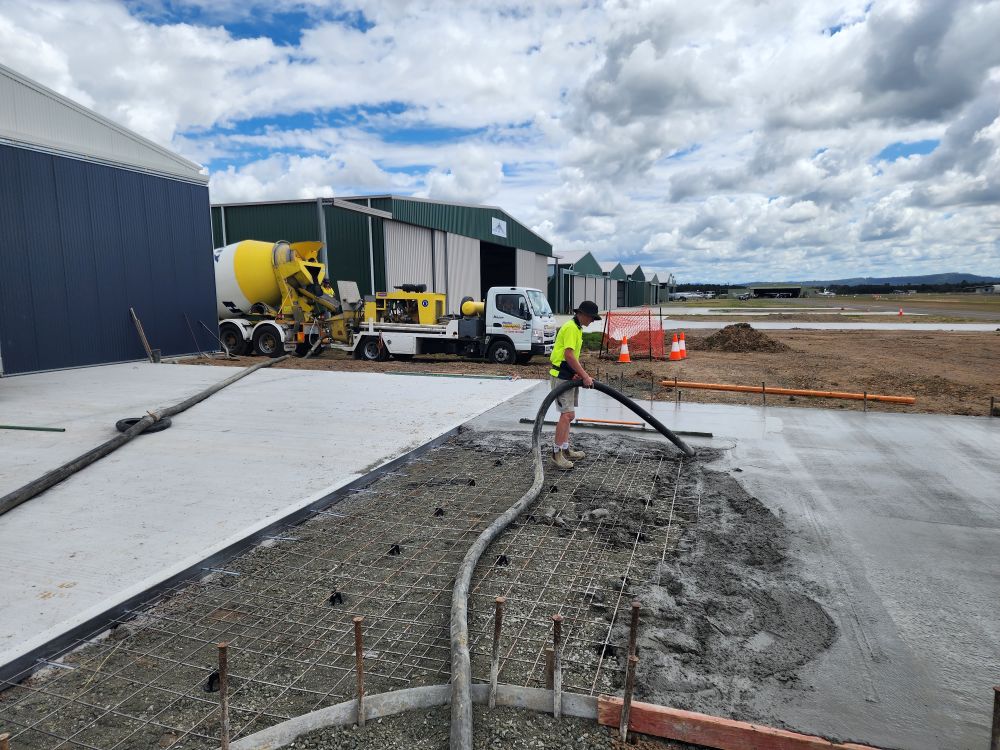Comprehensive Methodology for Precisely Calculating Concrete Volume Required for Your Construction Endeavours
To guarantee an accurate estimation of the volume of concrete essential for your construction projects, it is advisable to employ the straightforward yet powerful formula: Length × Width × Depth. Additionally, to mitigate potential issues such as waste, spillage, or uneven terrain that may occur during the concrete pouring process, rounding up your calculations by approximately 10% is highly recommended. Should you have any uncertainties regarding your measurements or calculations, do not hesitate to contact Hunter Concrete Pumps. Their team of experts can assist you in ensuring your estimates are not only accurate but also customised to align perfectly with your specific project requirements.

Applying the Standardised Volume Calculation Formula for Your Concrete Projects
When dealing with concrete, the measurement is typically expressed in cubic metres (m³). To effectively ascertain the quantity required for a concrete slab or foundation footing, simply utilise the formula outlined below:
Length (m) × Width (m) × Depth (m) = Volume (m³)
Prior to executing any calculations, ensure that all dimensions are converted into metres. For instance, if you possess a slab measuring 8 metres in length, 5 metres in width, and a thickness of 100mm (which converts to 0.1m), the calculation would appear as follows:
8 × 5 × 0.1 = 4.0m³
It is crucial to avoid ordering the exact calculated volume. Always round up your order by 10% to account for potential wastage, irregularities in the formwork, or any spillage that may occur during the concrete pumping process. Therefore, in this scenario, you would want to order 4.4m³ of concrete to ensure you possess enough material for your project.
In-Depth Volume Calculations for Common Slab Sizes and Their Material Requirements
| Slab Size (m) | Thickness (mm) | Volume (m³) | Add 10% Overrun | Final Order (m³) |
| 4 × 4 | 100 | 1.6 | 0.16 | 1.8 |
| 6 × 6 | 100 | 3.6 | 0.36 | 4.0 |
| 8 × 5 | 100 | 4.0 | 0.40 | 4.4 |
| 10 × 6 | 150 | 9.0 | 0.90 | 9.9 |
| 12 × 10 | 100 | 12.0 | 1.20 | 13.2 |
Effective Approaches for Accurately Determining Concrete Volume in Various Scenarios
- Strip Footings: When calculating for strip footings, adhere to the standard method of multiplying length, width, and depth. However, be aware that footings frequently vary in size. In such instances, dividing the job into smaller sections can significantly enhance accuracy and ensure that all variations are accounted for.
- Circular Slabs or Pads:
For calculating the volume of circular slabs, you can apply the formula: π × radius² × depth. For example, if you have a pad with a diameter of 3m and a depth of 100mm, the calculation would be:
π × (1.5)² × 0.1 ≈ 0.71m³. Remember to include an additional 10% for overrun to guarantee you have sufficient material. - Heavily Reinforced Slabs:
In cases of slabs that integrate heavy reinforcement with dense rebar or mesh, the necessary volume may decrease slightly. Our team is ready to assist you in making the required adjustments to your calculations to ensure they meet your project specifications.
Need Expert Assistance with Your Concrete Volume Calculations? Contact Us Today!
If you are uncertain about the precise quantity of concrete required for your project, please provide us with your slab dimensions, footings plan, or PDF drawings. Reach out to us for a comprehensive and accurate quote tailored to your specific needs. We will handle the calculations, ensure we appropriately round up, and even coordinate the concrete mix if you choose to utilise our pumping crew. Hunter Concrete Pump Hire offers services across the Newcastle area, The Hunter Valley, and a significant portion of the Central Coast. We are dedicated to assisting you in achieving success in your construction projects!
Your Reliable Source for Concrete Pump Hire in Newcastle
The Article: Estimating Concrete Volumes Accurately for Pumping first appeared on https://writebuff.com
The Article Accurate Estimating of Concrete Volumes for Pumping Was Found On https://limitsofstrategy.com

